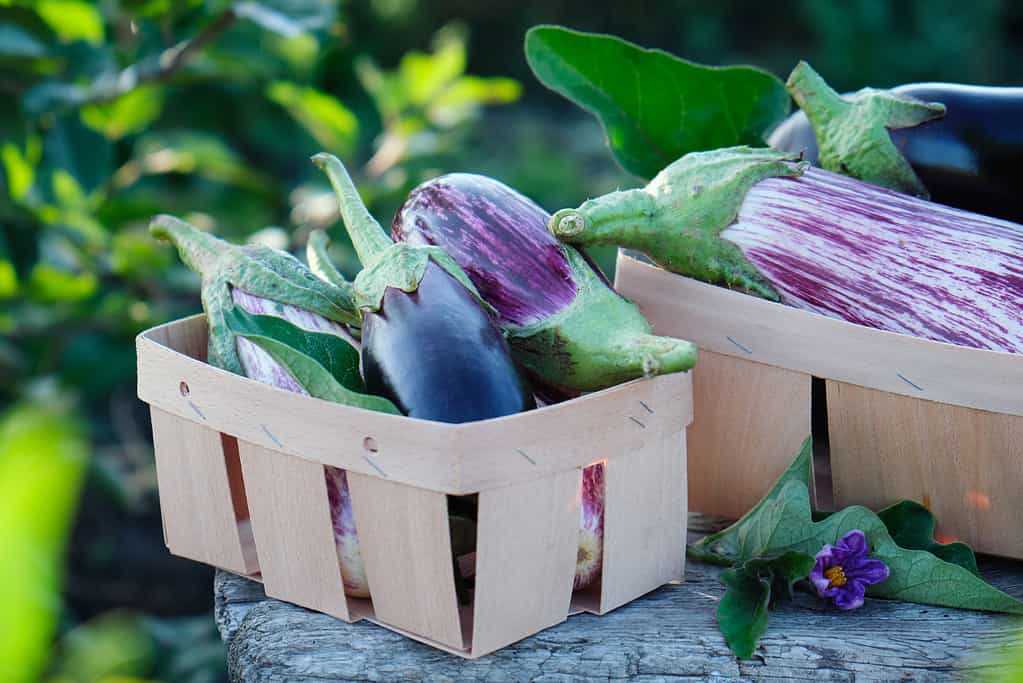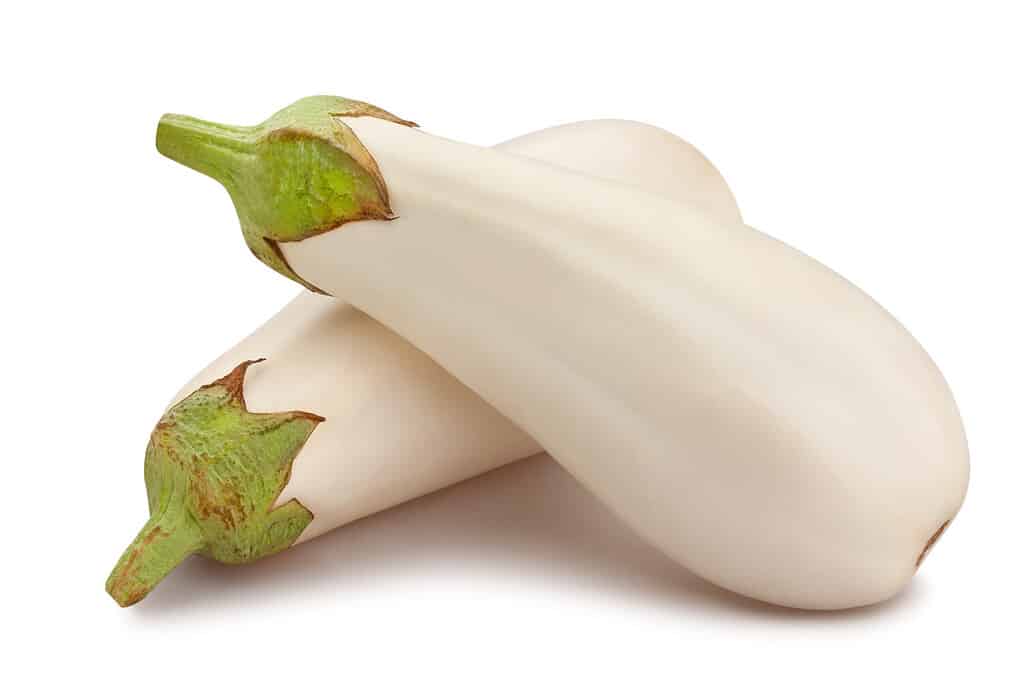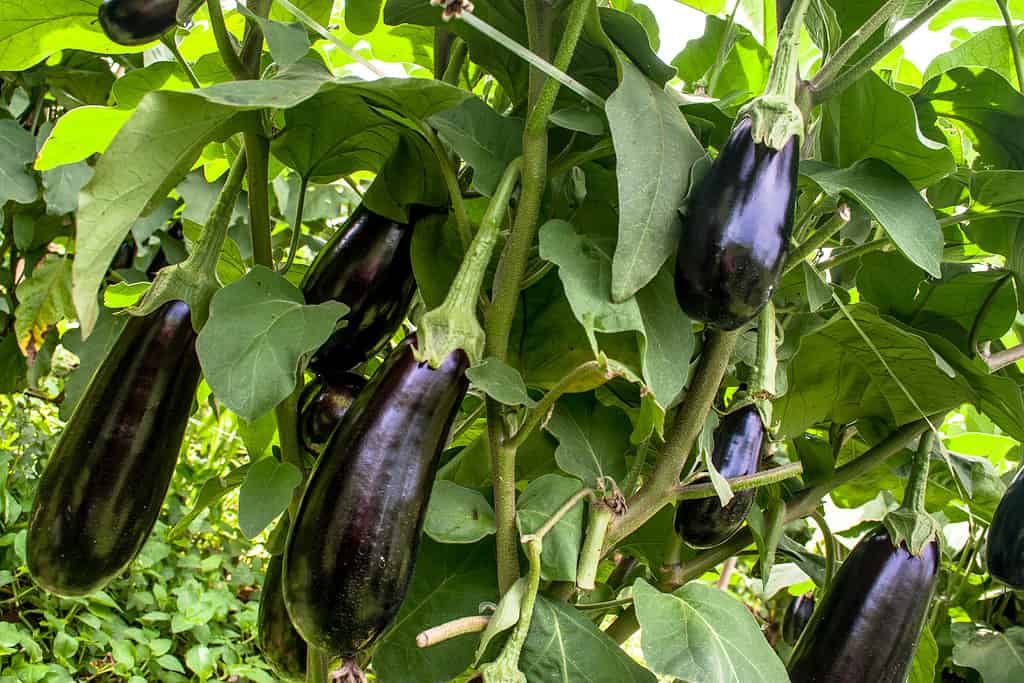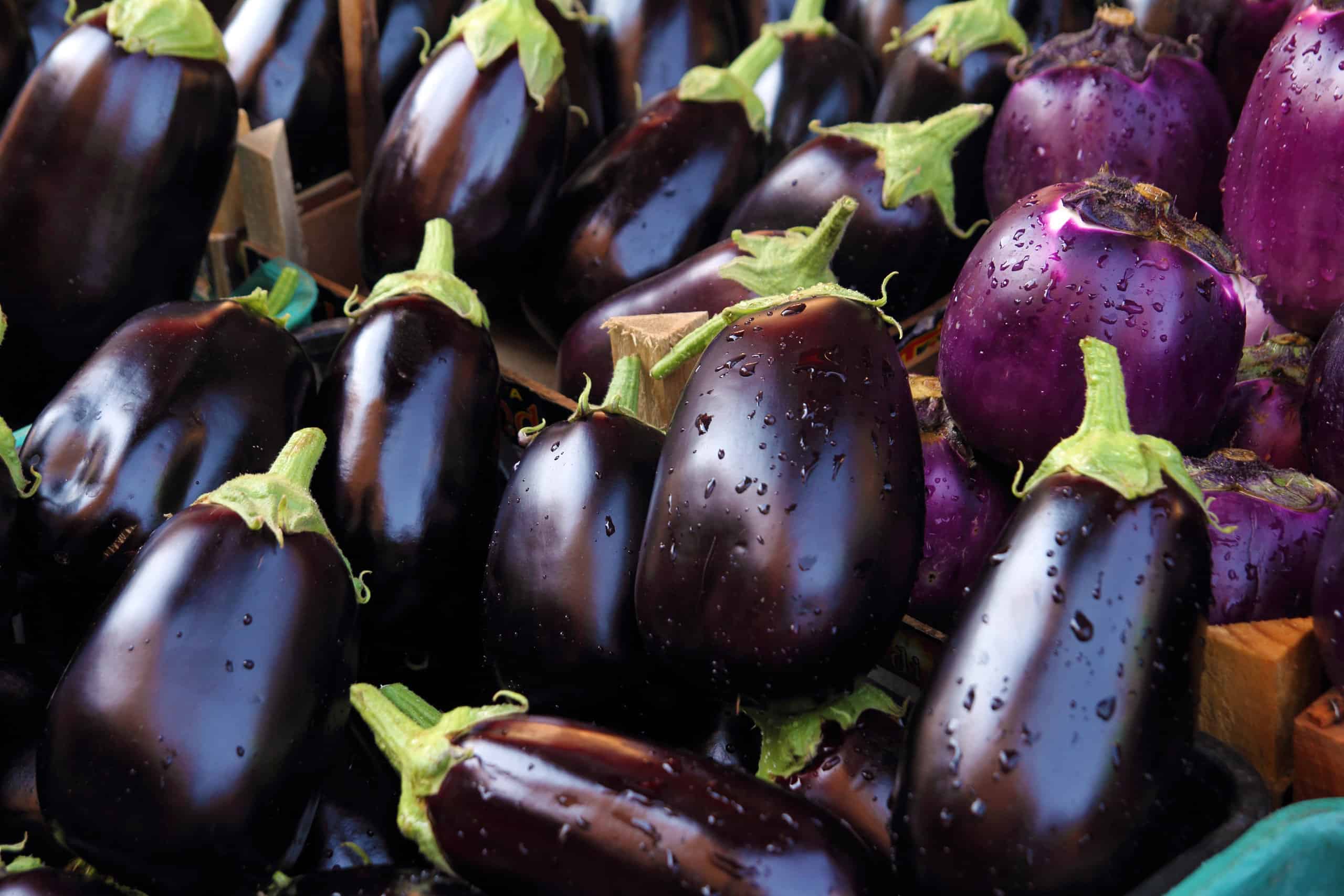Eggplant is a vegetable that’s loved for its delicious taste and versatility. It’s used in many different cuisines around the world and has a fascinating history that spans across continents. Usually, it is harvested through the mid-summer through mid-fall months.
Eggplant is used in many different cuisines around the world. It also goes by many different names, including aubergine and brinjal. You’ll find it in Mediterranean, Asian, and African cooking.
Plus, eggplant isn’t just yummy – it’s also nutritional. It’s rich in dietary fiber, antioxidants, vitamins, and minerals. Therefore, eggplant provides tons of nutritional value on top of its worldwide use.
In this article, we will delve into the heart of eggplant cultivation and its peak season, examining the factors that influence its growth and availability.
Eggplant in the Culinary World
Eggplant is a special ingredient that is utilized in many traditional recipes. This vegetable is commonly used in the West in recipes like eggplant parmesan or baba genoush. However, you’ll also find it around the world in other recipes.
This veggie does have a shape and flavor all of its own. However, it can easily be transformed when cooking it. You can roast it to make it soft and creamy or grill it to make it smokey and tender. The possibilities are endless. Chiefs even fry it to make it crispy!
In many areas of the world, people have been using eggplant for a long time. Sometimes, this veggie is even the star of the show. People have figured out many ways to cook it.
Eggplant Season

Eggplants are typically picked in from mid-summer to mid-fall, depending on the area.
©Valentina_G/Shutterstock.com
Just like any other plant, eggplant has its own special time to grow. When grown and harvested at the right time, it can flourish and produce much food.
Every area has its own peak season for eggplant. Many factors are involved in exactly what is the peak season, such as weather, sunlight, and soil quality. All of these factors must align for eggplant to thrive.
For eggplants to grow well, they prefer a climate that’s warm and sunny. They don’t like it when it’s too cold or frosty. So, when the sun is generous and the air is comfortably warm, that’s when eggplants begin to show their true potential.
However, nature doesn’t stick to a strict schedule. Eggplant won’t be ready to harvest on the same day every year. Plus, technology and clever farming methods have extended the season in many places. Therefore, even when it isn’t exactly the right time, you can often still find eggplant.
Eggplant Varieties
Eggplants are not all the same. Several varieties are planted all around the world, and some of these varieties are actually very different. Some are big and round, while others are slim and elongated. Some are deep purple, while others might be striped or even white.
The Globe eggplant is the classical eggplant. It is big, round, and has deep purple skin. It’s commonly used in famous eggplant dishes like eggplant parmesan. If you buy a nondescript “eggplant,” this is probably the variety you’re getting.
There is also the Japanese eggplant, which is long and slender. It’s known for soaking up flavors like a sponge and is utilized in Asian cuisine.
Different parts of the world have their own types of eggplant. For instance, the Italian eggplant is most common in (you guessed it) Italy. The Thai eggplant is common in Thailand and surrounding countries.
These varieties can still often be used interchangeably, though. It depends mostly on how you cook them. However, they do have their own distinct flavor that lends better to certain dishes.
Eggplant is extremely adaptable, which is one reason why it has spread across the world. Some varieties may be hard to find in certain areas.
Where is Eggplant Grown?

While eggplants are grown all over the world, they may look a bit different than you’re used to.
©bergamont/Shutterstock.com
You may be surprised to learn that eggplant is grown nearly everywhere. It’s a globetrotter that has found a home in practically every region of the world. While different areas do grow different varieties, many of them do have at least one that they grow regularly.
The eggplant likely originated from Asia, though we don’t know exactly where. The countries of India, China, and Thailand all cook dishes with eggplant today and still have many eggplant varieties that they grow. Thailand has its own unique variety called the Thai Long Green, which brings a unique flavor to its dishes.
The Mediterranean region also plants and uses eggplants. In places like Greece, Italy, and Spain, eggplant is a staple ingredient in dishes that have stood the test of time.
The Greeks created “Moussaka,” a layered dish of eggplant, minced meat, and béchamel sauce. Italians craft “Melanzane Parmigiana,” a masterpiece of eggplant, tomato sauce, and cheese. And over in Spain, “Escalivada” showcases the smoky flavors of grilled eggplant alongside other roasted vegetables.
The Middle East is also home to many eggplant varieties. “Baba Ganoush” in Lebanon is like a creamy dip made from roasted eggplant, while Turkish cuisine offers “Imam Bayildi,” a dish with eggplant stuffed with a savory filling.
Eggplant didn’t stop in these regions, though. It is also found in many other regions worldwide, such as Africa and North America. In Africa, eggplant is commonly used in spicy stews and chutneys.
How Eggplants Are Grown
Eggplants may come in many varieties, but how they are grown is similar worldwide. Farmers work hard to cultivate these vegetables and feed the community around them. Eggplants may not play a huge role in cuisine in North America, but they do play a huge role in some other areas.
Cultivating eggplant does have its own unique challenges. Pests and diseases can sometimes show up, threatening the health of the crops. To fight these challenges, farmers sometimes have to use pesticides and other chemicals.
However, these methods can have a negative impact on the environment, affecting soil quality, water, and even the health of the farmers themselves.
In other places, eco-friendly alternatives are used. For instance, farmers may introduce other bugs to eat the pests, or they may rely on natural fertilizers instead of chemical options. Many farmers now use drip irrigation, which helps them use less water. In places where water is scarce, drip irrigation may be the only way to grow eggplants.
In many areas, eggplants are part of a crop rotation. Farmers may switch between various vegetables, like tomatoes, beans, and corn. This allows the soil to bounce back before eggplants are planted again.
Of course, farming technology is changing all the time. Farmers are focusing on more sustainable practices as they try to feed more people with less land. Plus, farmers know much more about how the soil works, which has prompted more soil-supportive practices. These benefit the environment and help ensure we can continue to grow eggplants in the future.
Summary of When Eggplant Is in Peak Season and Where It Grows

Eggplants are versatile, adaptable veggies that you can grow and use in many different dishes.
©Alf Ribeiro/Shutterstock.com
Eggplants are humble vegetables, but they have found themselves traveling worldwide. They’re grown everywhere and play a key role in many cultural dishes. Each area has its own variety (or many varieties) that’s somewhat unique from the others. Many varieties are specific to different regions.
Whether the classic “Globe” eggplant or the slender “Japanese” variety, each kind brings a unique essence to dishes. They’re all unique in their own way, but they are still eggplants.
Eggplants are usually harvested from the middle of summer to the middle of fall. However, the date differs greatly from region to region – and even year to year, depending on the weather. Therefore, there isn’t one peak season for the whole world. You also have to consider that different hemispheres are in different seasons, meaning they may be harvesting eggplant at completely different times.
Thank you for reading! Have some feedback for us? Contact the AZ Animals editorial team.








